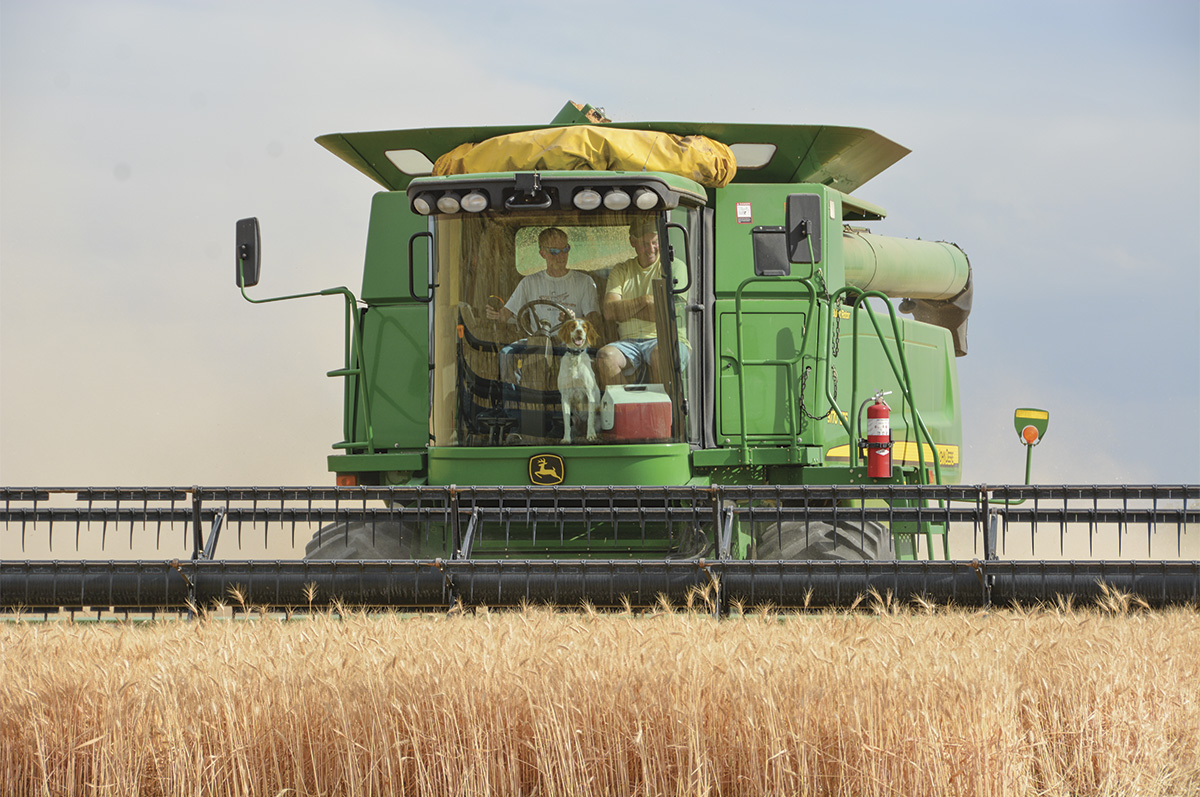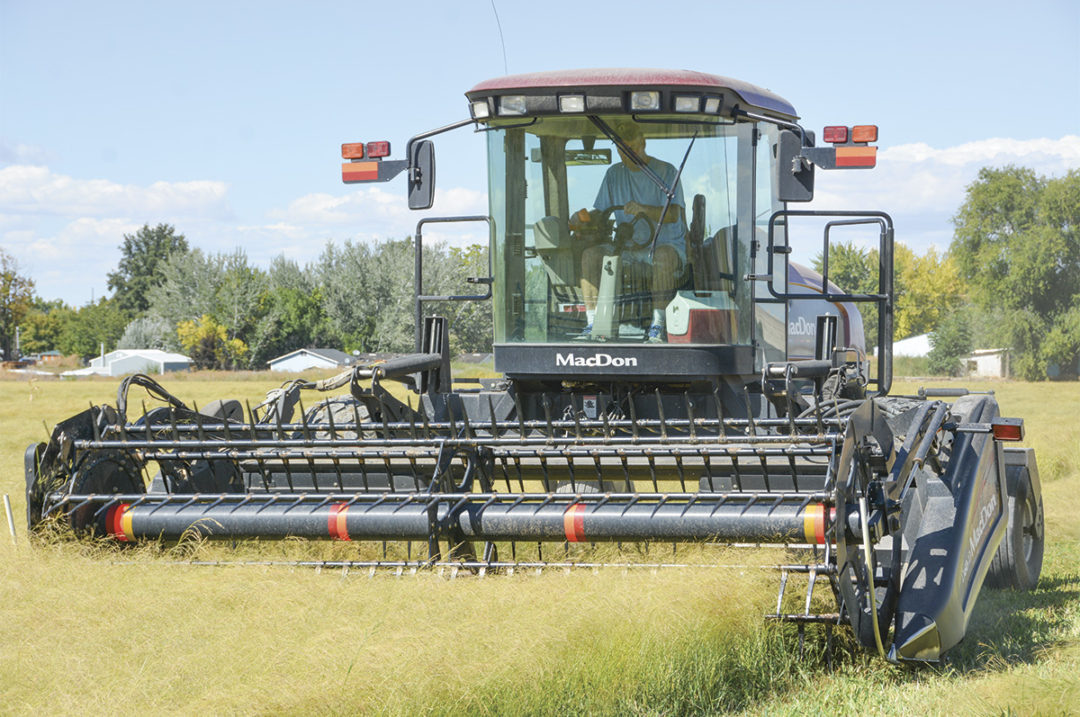It is a truth universally acknowledged that a producer in possession of any type of farm or ranch must be in want of updated machinery. Whether a bigger combine, a new baler or just a nice truck for hauling, there is always some item that would streamline the business.
But with diverse demands on time and money, the custom business has a strong niche in the agricultural economy. According to the National Agricultural Statistics Service (NASS), custom work contributed over $119 million to the Idaho economy in 2022. So what considerations should play into a producer’s decision to custom hire versus purchasing, maintaining and operating their own equipment?
Consider your options
“The big first question is: ‘Is custom hire available?’” says Brett Wilder, a University of Idaho (U of I) Extension economist specializing in farm business management. “And if yes, can I get it done when I need it done?” If the answer to either is no, then the economics of the question are irrelevant.
If custom work is an option, says Brian Jensen of Preston, “It’s all math.” Jensen has been doing custom forage harvest for many years, and a few years ago sold his dairy to focus on the custom business full time. “You have to figure out your costs per acre to raise it and harvest it,” Jensen says. In economic terms, this process is included in the partial budget analysis.
“It’s something all of us have done,” says Wilder of the partial budget calculation, “whether it’s on the back of a napkin or something more complicated.” The analysis breaks the question into net benefit of a proposed action and the reduced budget of the specific problem – that is, it considers the additional cost, additional benefit, cost reduction and benefit reduction of a proposed action. “It gives you a 4-square picture of what this small change will do on an isolated basis,” says Wilder.
Calculate costs (of hiring)
Most costs of custom hiring are included in a given fee. However, logistical questions should also be on the table. Do your fields have hidden wet spots or ditches that might trip up an unfamiliar applicator? Will adding third parties complicate coordination (for example, if combines and trucks are hired separately)? Are you gambling on that custom operator to prioritize you over your neighbors during a narrow break in spring weather? Are you willing to give up some level of control on your operation?
Calculate costs (of buying)
Meanwhile, costs to purchase and operate your own machinery may require a larger napkin. “When you own your own equipment, you’re paying for [costs] directly,” says Colby Field, who in May will take the reins as the new U of I Extension economist specializing in risk management. “You’re making the bet that you can do it cheaper than [the custom operator] can.”
Equipment needed is usually the first consideration. “You have to ask how the equipment would fit into the broader operation,” says Wilder. Is a single-use machine required or one with more versatility? If the latter, care should be taken to proportion cost appropriately. “If you have a tractor that’s used for multiple applications, it’s not fair to credit that whole cost to a single use when you’re making a decision,” Wilder says.
Another consideration is farm size. “If you’re not cutting the acreage, you can’t afford to buy the machine,” says Jensen.
Doug White of New Plymouth farms 90 acres and operates a local custom harvesting operation. While he has some bigger clients, many of the 700 to 800 wheat acres he harvests are for 50-acre producers. “They can’t justify owning a combine,” he says.
However, initial purchase and operating costs will give only an incomplete picture. “Most cost calculators have repair money built in but don’t consider the downtime,” says Wilder. A good partial budget analysis should also include storage and maintenance costs.
Producers should also consider time – and timing – constraints. “The seed crops are very time-sensitive, and it is important to get the crop harvested at the correct time after swathing,” says White, who also swaths and combines teff grass and various seed crops, including radish, turnip and lettuce.

Doug White (shown here harvesting wheat with son Connor) does custom grain and seed harvest in the New Plymouth area. Photo provided by Doug White.
Think through the benefits (of hiring)
A major benefit of a custom application is equipment type or quality. A common example is hiring a cropduster to avoid tracking up a field. But sometimes even the ground jobs make sense to “farm out.”
With even good used equipment bringing top dollar, a producer may find that his budget dictates smaller or older equipment than desired. Custom hires often offer larger or newer equipment. Time savings – and the reduced risk of downtime with a rainstorm on the horizon – are benefits to consider. “I have a small sprayer and I can spray my own wheat, but it takes a long time,” says White. “The last several years, I’ve hired the local fertilizer company to come spray it with their big sprayer. It gets done a lot faster and I don’t have to worry about it.”
Then, too, says Jensen, “Labor finally broke six months ago – but before that you couldn’t find someone to sit on a tractor for 15 dollars an hour.” For many ag operations, says Field, it doesn’t make sense to hire hourly labor and to incur payroll expenses if it can be avoided. Contracting an experienced operator along with the machine bypasses the labor problem and frees up the producer for other tasks.
Think through the benefits (of buying)
But for some operations, labor is not a problem. “In [a cost-minimizing] kind of a system, you internalize everything you possibly can,” says Field. “For most farmers, labor is almost a fixed cost – you’re working all summer anyway so you just see how much you can cram in.”
On that note, says Wilder, “If you are someone who has equipment and extra time and labor available, you can do custom hire for your neighbors.”
That was Jensen’s story. “In order to harvest our own feed, we couldn’t afford to run the equipment we wanted to,” he says. Custom work initially helped the Jensen operation pay for the desired equipment and eventually morphed into a standalone business.
At the end of the day, the decision may come down to personal preference. With the numbers in mind, a producer may still choose the less profitable option if it gives him peace of mind – whether that means gaining control over the task or taking something off his busy plate. “It might cost a little more, but in the long run it might be worth it for the operation,” says Wilder.




.jpg?height=auto&t=1713304395&width=285)
.jpg?height=auto&t=1713198780&width=285)
